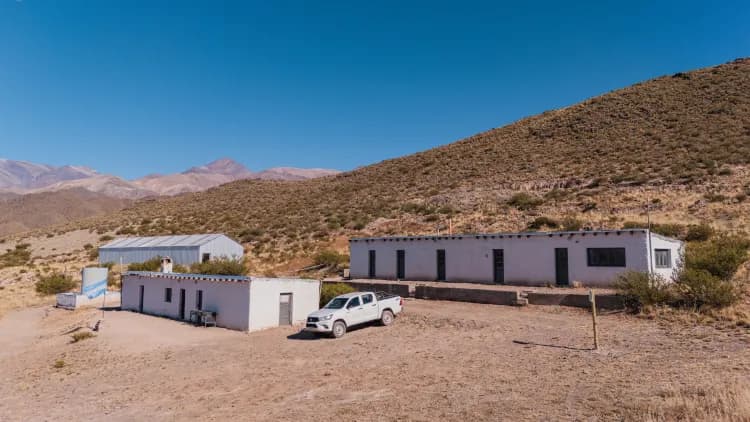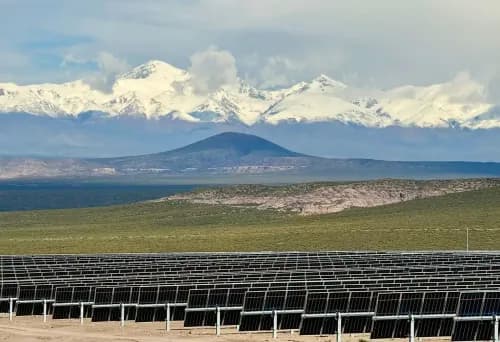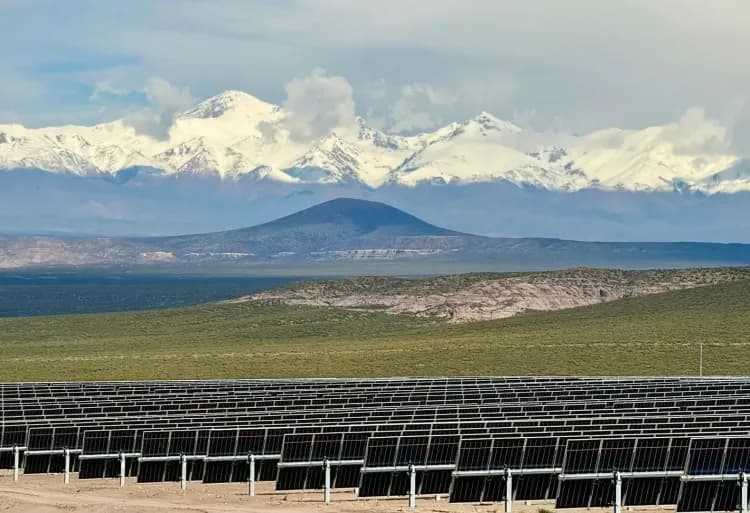The founder of Global Lithium, one of the most influential voices in the industry, shares an unfiltered analysis of market dynamics, China’s role, Argentina’s potential, and the outlook for electric vehicles. A former FMC executive who began his career in the lithium sector in 1990, Lowry offers unique insight into the evolution of the global supply chain.
A deep conversation that also touches on the impact of investors, geopolitics, and the key factors shaping regional development: “I think Argentina will succeed largely on the merits of Argentinians themselves, who have been working in lithium since 1997.”
By Agustín López Muñoz
Communications Manager, Panorama Minero
How do you see the current lithium market situation and your personal sentiment in this downcycle the industry is going through?
I’d say my sentiment has become patience. I know this phase will pass, and I’ve seen it before. Rather than get upset, as I always say, I try to understand what’s going on. I respect what China has done, but some of their actions have made project development difficult. It’s been negative on ESG, based on the quality of their subsidizing—poor quality, high-cost lithium assets. But in their model, it works, because they have control of those assets, and in a vertically integrated model, they can take a loss to keep their overall lithium buy down.
If you produce 100,000 tons at high cost, but it keeps the price low, you can buy the other 300,000 tons in the global market at a cheaper price. It makes perfect sense for them. The world has to learn how to deal with this environment. This too shall pass.
What do you expect will happen next in the lithium industry, considering market conditions?
Talking about cycles—yes, there’ll be another one. People say we’ll never see $80,000 again. I never thought we’d see $80,000 the first time. I never thought we’d see $40,000. And it happened. The thing to really understand is that when the price ran up to $80,000, the shortage wasn’t that great—it was a few percentage points. And when the price crashed, there wasn’t that much oversupply either.
This is still a small market. It’s growing fast, but compared to things like iron ore or copper, it’s still tiny. Volatility is going to continue. I do believe there’ll be cycles, and the next one could be longer. This cycle has stayed down for so long because so much money went into lithium so fast. In China’s case, they invested in assets they’ve known about for decades, like lepidolite deposits, which hadn’t made economic sense before.
In Africa, the reality is that they put artisanal miners to work, and China exploited that. And I use the word “exploited” in the most negative sense.
How do you see the tension between ESG and the push for lower costs?
The world also has to decide what they’re willing to tolerate. People like to talk about ESG, but they also want cheap batteries and cheap EVs. There’s a balance, and I think that balance has gotten out of whack on the negative side. But again, we have to deal with the reality as it is. I am patiently waiting for the market to correct, which it will. If I were smart enough to know exactly when, I’d make a lot of money. But I’m not. That’s my view.
How do you analyze China’s role in controlling the market and prices?
This is something I’ve always said, though a lot of people disagree with me: China controls most of the capacity for processing hard rock, and some of the capacity for where brine needs to be upgraded. But they’re dependent on Australia, on Argentina, on Chile, on Africa for raw material. If China could do all this within their borders, they would. This is not like rare earths, where they really have a bully pulpit.
Why are the Chinese players investing outside of China? You also have to give them credit. Ganfeng has been investing in Argentina for years. They invested in Western Australia long ago. Tianqi, same thing. China’s been willing to do that because more than 20 years ago, when Hu Jintao was running the country, they selected certain industries and threw government support behind them. The energy sector was one, and that has evolved into the battery sector and the lithium-ion battery supply chain. That’s why BYD is where it is. That’s why CATL is where it is. But make no mistake, their model has been to massively subsidize those industries. You might not like it, but you can’t stop it. You have to compete with it.
Do you think the geopolitical context, such as the Middle East conflict, could affect the long-term fundamentals of such a volatile industry?
First, let’s be clear—it’s not a war. In the U.S., the word “war” is loaded. Trump would need congressional approval to declare war. But since Clinton, every president has carried out these kinds of attacks. It’s not new. It’s just part of international politics that’s played out at different times.
What matters most right now is the China situation and tariffs. There’s a lot of uncertainty. But I’m an old man, I’ve lived through this many times. I’m talking to a young man—but you’re also Argentinian, and you’ve seen a lot of political volatility. So maybe you’re even better equipped to handle it.
I don’t think the current situation has a direct impact on the lithium market—unless it escalates to the point where it causes a recession. That would lower demand, reduce funding for ESS, and hit the EV market. But honestly, I don’t see that happening.
What’s behind the entry of big players like Exxon, Chevron, or Equinor into lithium?
That’s the big change. Ten years ago, Albemarle was the biggest company in the space—and by global standards, they’re not that big. Now you’ve got players with huge balance sheets. If they decide to go into lithium, they don’t care if the price is $8,000 or $28,000. If it’s strategic, they’ll go. That’s the real change—the deep pockets have come.
What about smaller companies? Do they still have a place?
I don’t think they’ll disappear. The model will be like before—juniors looking to be acquired. What’s changed is that now there are buyers. Ten years ago, I was already saying oil companies would eventually need to get involved. Now they are.
Will the industry become even more concentrated?
It’s always been concentrated. When I started, there were only two Western lithium companies. In China, it became easy to get funding for conversion plants, but the raw material is still in few hands. Will it become even more concentrated? Probably. In a 3 million ton world, like I said on LinkedIn five years ago, the “Big Three” will become the “Big Six”—or maybe the “Big Eight.”
What role can Argentina play in this shifting context?
Argentina’s time has finally arrived. You’ve got people with capital ready to invest. Everybody’s there—the Chinese, the Aussies, the Americans. Chile doesn’t have that. Chile still has SQM, Albemarle, and some talk. Even with Codelco being pushed into SQM. Argentina is now that “new place” on the global lithium map.
What’s your take on Brazil as a new player, and what warnings would you give?
Brazil has great potential. Sigma has done a nice job. Pilbara bought Latin Resources. But my caution to Brazil: build conversion capacity in Brazil. You can probably do it at low cost—or at least have a hub outside of China. Because as long as you keep developing spodumene capacity but leave conversion to China, there’s only one customer. And that’s the difficulty for hard rock projects.
How do you see the EV market in the U.S.?
In the U.S., people like to drive long distances. We’re not a patient bunch. But I’m seeing more EVs every day. Even when I walk my dog in the morning, I see more Model 3s than anything else. People are getting used to it. Sure, EV sales aren’t growing as fast as projected, but we’ve seen a shift to hybrids. People adapt. Most of those who bought a Tesla, GM or Ford product found out one EV is enough. Maybe even two.
Charging isn’t that big a deal—even with our limited infrastructure. Most people don’t drive hundreds of miles daily. And while U.S. media paints a negative picture, the global market is strong. Europe and China are more important than the U.S. in this story.
And what about the lithium industry within the U.S.?
Thacker Pass is on budget and hitting milestones. I testified at the Arkansas Oil and Gas Commission when Standard got their royalty approved. Exxon got theirs too. Arkansas is moving. You’ll see things happening in Texas. I think the Smackover becomes a real lithium province. And the people involved have the balance sheets to do anything. We just need DLE to be proven as a viable path to unlock that potential.


























